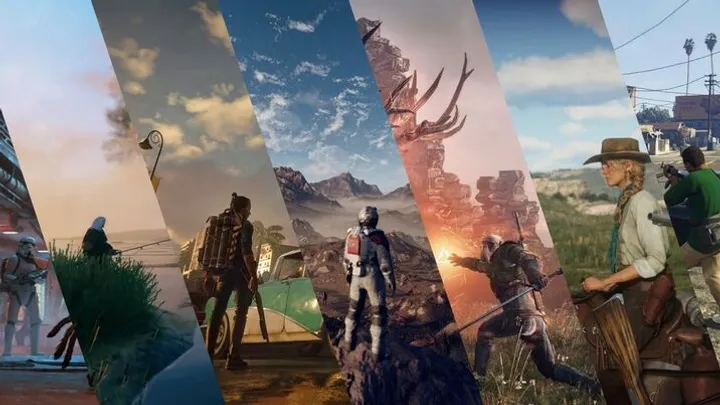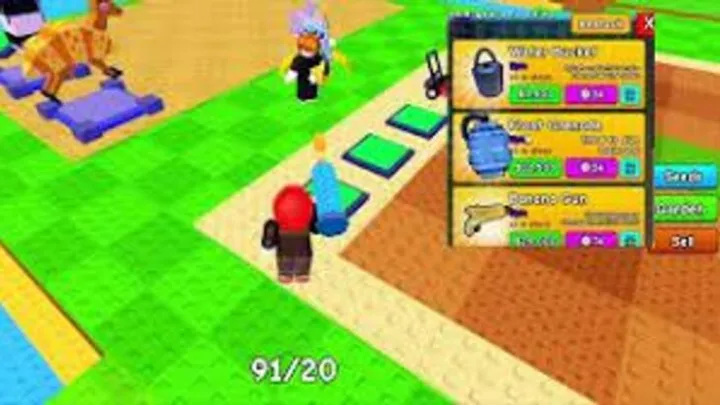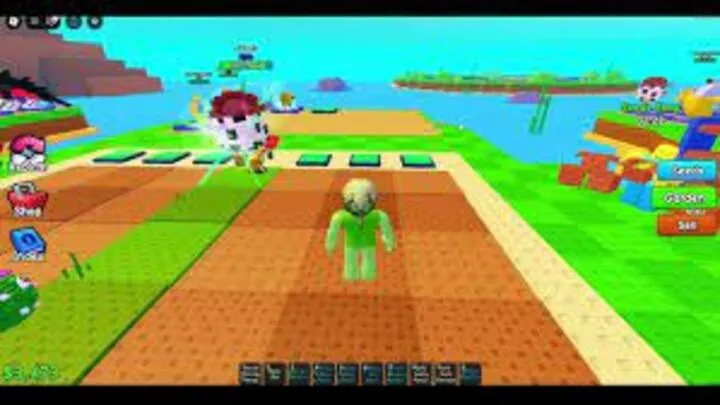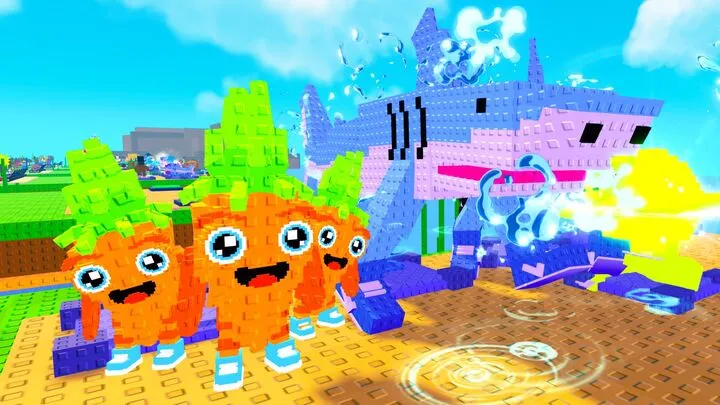Introduction
“Plants vs Brainrot” isn’t just another parody of classic tower defense games—it’s a mind-twisting experience that redefines spatial awareness, environmental control, and player strategy. In this eerie reimagining of a once-colorful battlefield, players face off against Brainrot, a spreading infection that corrupts everything it touches. Mastering the map isn’t about memorizing lanes—it’s about learning how the environment itself reacts, bends, and reshapes in unpredictable ways.
This guide dives deep into the hidden layers of exploration within “Plants vs Brainrot.” From discovering secret tunnels that connect forgotten zones to manipulating space for tactical advantage, we’ll explore how to dominate the map, uncover hidden rooms, and survive the chaotic shifts of Brainrot’s ever-mutating world.
1. Understanding Map Dynamics in Plants vs Brainrot
Before diving into secrets and shortcuts, you must grasp how the game’s maps function. Unlike traditional Plants vs Zombies layouts, maps in “Plants vs Brainrot” are alive—literally.

1.1 The Shifting Terrain System
- Every round, the ground may distort, reshaping paths and altering enemy routes.
- Roots and vines sometimes grow mid-match, blocking sunlight lines or opening new energy channels.
- Players who observe these micro-shifts can anticipate where Brainrot will spread next.
1.2 Strategic Awareness
Understanding the environment’s pulse means planning ahead. Use scouts like Sunbuds or Neural Sprouts to detect terrain instability. The key to map mastery is adaptation—knowing when to rebuild, reposition, or exploit growth anomalies to your benefit.
2. The Art of Spatial Control
2.1 Lane Domination and Vision Lines
Unlike the static lanes of older tower defense games, “Plants vs Brainrot” uses dynamic vision zones. Brainrot fog spreads, obscuring both enemies and resources. Controlling vision is essential:
- Place Bio-Lantern Plants to pierce corruption fog.
- Link nodes between vision plants to reveal map sectors permanently.
2.2 Root Networks as Tactical Lines
Your plant network acts like neural tissue. Positioning plants close enough creates synaptic roots, allowing damage boosts and communication between species. Spatial control isn’t just about defense—it’s about synergy.
3. Discovering Hidden Paths
3.1 The Subterranean Veins
Some maps contain underground passageways called Veins, which connect major battlefronts. You can access them using Burrow Seeds dropped by mutated mushrooms. These paths allow faster repositioning but drain sunlight energy.
3.2 Hidden Vineways
A few levels feature “Vineways,” natural tendril bridges forming across cliffs or toxic lakes mid-battle. Activating them gives players shortcuts to deploy reinforcement plants quickly—ideal for surprise ambushes against regenerating Brainrot clusters.
4. Secret Rooms and Environmental Puzzles
4.1 The Memory Gardens
Secret rooms often take the form of Memory Gardens, areas filled with echoes of the original plant world before infection. Solving environmental puzzles here—like aligning flower patterns or syncing leaf vibrations—unlocks rare upgrades.
4.2 The Rot Chambers
High-risk, high-reward zones filled with Brainrot cores. Entering one requires a Photosynthesis Shield, crafted through rare materials found in corrupted sunlight pools. Clear these chambers to stop local infection growth entirely and gain “Neuroseed” bonuses.
5. Navigating the Spatial Distortion

5.1 Recognizing Reality Shifts
The longer a match continues, the more the environment mutates. Watch for warped textures, reversed lighting, or bending geometry—signs that a Spatial Distortion Event is near.
5.2 Surviving Dimensional Drift
When the field twists, your plant grid may realign. Use adaptive plants like Flex Ferns that can adjust placement instantly. During extreme shifts, rely on visual cues—glowing moss often indicates the new “ground level.”
6. Tactical Resource Placement in Dynamic Maps
6.1 Predicting Energy Flow
Sunlight isn’t static. Learn to identify “solar streams,” temporary zones of high sunlight yield. Position solar plants there for efficiency, but move them when corruption drains the field.
6.2 Using Growth Forecasts
Map overlays (unlocked by the CartoSeed Upgrade) predict where vines or rot might grow next. Use this data to plant high-value defenses in safe zones or reroute your strategy mid-wave.
7. Exploration Tools and Assistive Plants
7.1 The Explorer’s Kit
By mid-game, players can unlock the Explorer’s Kit, a utility suite granting:
- Rot detectors (revealing hidden infection roots).
- Bioluminescent flares to uncover fog zones.
- Portable plant pods to instantly redeploy units.
7.2 Supportive Flora for Exploration
Deploy these exploration plants to navigate complex terrain:
- Glowvine: illuminates dark caverns and regenerates fog-cleared zones.
- Trailcap: leaves spores marking your exploration routes.
- Pathbloom: temporarily freezes shifting terrain for 10 seconds.
8. Combat Strategies in Hidden Zones
8.1 Engaging Brainrot Nests
Secret areas often contain Brainrot Nests—clusters that spawn mini-bosses. When discovered:
- Clear surrounding corruption before attacking the core.
- Use heat-based flora like Thermo Blasters to prevent regeneration.
8.2 Boss Ambush Management
Bosses in enclosed spaces have spatial advantages. Counter with adaptive plants that use vertical growth like Spikevine Towers or Skybloom Cannons. Use the environment itself—falling spores and explosive pods—to control space effectively.
9. Advanced Navigation Techniques
9.1 Spatial Markers
The shifting map makes landmarks unreliable. Players can craft BioMarkers—glowing plant totems that persist across shifts, helping you reorient quickly after dimensional changes.
9.2 Temporal Reversion Seeds
Rare Temporal Seeds allow a brief map rollback (about 15 seconds), reverting terrain to its previous stable state. Use these wisely to save critical plants trapped in distortion or to reclaim sunlight zones.
10. Mastering Map Awareness for Long-Term Play

10.1 Pattern Recognition and Environmental Learning
Veteran players recognize Brainrot’s spatial logic. While the map appears chaotic, its corruption follows mathematical patterns tied to solar intensity and root density. Tracking these lets you forecast where new rot outbreaks will form.
10.2 Integrating All Systems
Map control isn’t an isolated skill—it’s the synergy between observation, adaptation, and strategic timing. Once you fully integrate environmental feedback into your playstyle, “Plants vs Brainrot” transforms from a defense game into a living, evolving ecosystem battle simulator.
Conclusion
Map control in “Plants vs Brainrot” isn’t about memorizing layouts—it’s about understanding movement, rhythm, and mutation. The world is alive, breathing, and constantly reshaping under the influence of Brainrot’s corruption. By mastering environmental awareness, exploiting hidden paths, and solving secret room puzzles, you evolve from a passive defender into a strategist who bends the battlefield itself to your will.
True victory in “Plants vs Brainrot” doesn’t come from raw power—it comes from understanding the land’s memory and learning to survive its madness.

















